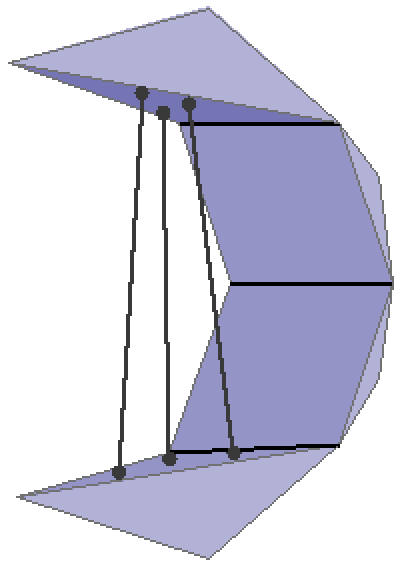- 04 Junio 2013
 El Departamento de Geometría y Topología, junto a la Facultad de Ciencias, tienen el gusto de invitarles a la siguiente conferencia: Rigidity of origami surfaces
El Departamento de Geometría y Topología, junto a la Facultad de Ciencias, tienen el gusto de invitarles a la siguiente conferencia: Rigidity of origami surfaces
Ponente: profesora Ileana Streinu, del Smith College y University of Massachusetts Amherst (USA).
Fecha: viernes 7 de junio de 2013
Hora: 12.00 horas.
Lugar: Salón de Grados del Edificio Mecenas (patio)
Resumen: Cauchy's famous rigidity theorem for 3D convex polyhedra has been extended in various directions by Dehn, Weyl, A.D.Alexandrov, Gluck and Connelly. These results imply that a disk-like polyhedral surface with simplicial faces is, generically, flexible, if the boundary has at least 4 vertices. What about surfaces with rigid but not necessarily simplicial faces? A natural, albeit extreme family is given by flat-faced origamis. Around 1995, Robert Lang, a well-known origamist, proposed a method for designing a crease pattern on a flat piece of paper such that it has an isometric flat-folded realization with an underlying, predetermined metric tree structure. Important mathematical properties of this algorithm remain elusive to this day. In this talk I will show that Lang's beautiful method leads, most often, to a crease pattern that cannot be continuously deformed to the desired flat-folded shape if its faces are to be kept rigid. Most surprisingly, sometimes the initial crease pattern is simply rigid: the (real) configuration space of such a structure may be disconnected, with one of the components being an isolated point. This is joint work with my PhD student John Bowers, who also implemented a very nice program to visualize what is going on.
Escribir un comentario
Información básica sobre protección de datos personales
Responsable: Universidad de Granada
Legitimación: La Universidad de Granada está legitimada para el tratamiento de sus datos, siendo de aplicación las bases jurídicas previstas en el art. 6.1 del RGPD que correspondan en función de la finalidad pretendida por usted en el formulario de contacto.
Finalidad: Gestionar su comunicación.
Destinatarios: No se prevén comunicaciones de datos, salvo que sea necesario para gestionar su solicitud.
Derechos: Tiene derecho a solicitar el acceso, oposición, rectificación, supresión o limitación del tratamiento de sus datos, tal y como se explica en la información adicional.
Información adicional: Puede consultar la información adicional y detallada sobre protección de datos, en función del tipo de tratamiento, en la UGR en el siguiente enlace




